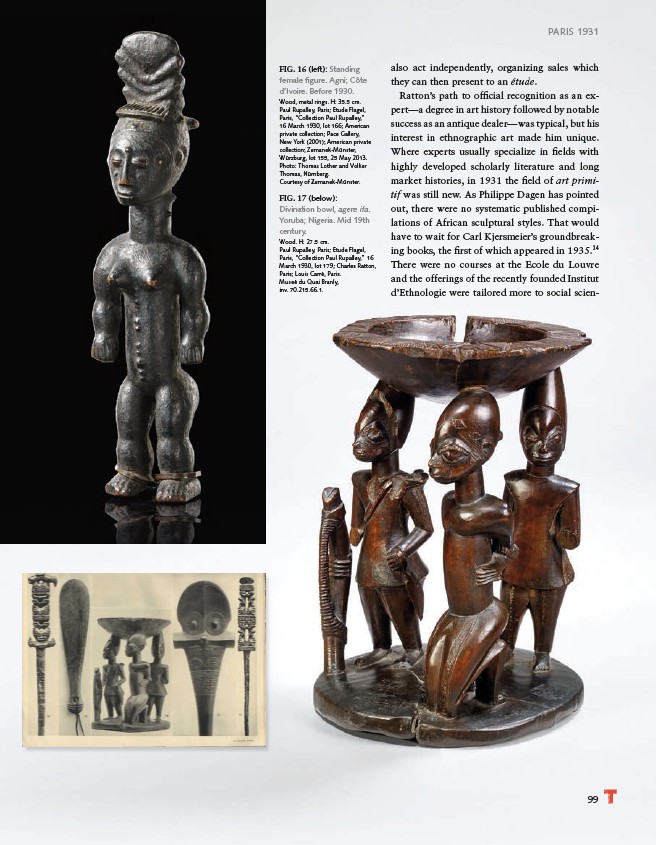
also act independently, organizing sales which
they can then present to an étude.
Ratton’s path to offi cial recognition as an expert—
a degree in art history followed by notable
success as an antique dealer—was typical, but his
interest in ethnographic art made him unique.
Where experts usually specialize in fi elds with
highly developed scholarly literature and long
market histories, in 1931 the fi eld of art primitif
was still new. As Philippe Dagen has pointed
out, there were no systematic published compilations
of African sculptural styles. That would
have to wait for Carl Kjersmeier’s groundbreaking
books, the fi rst of which appeared in 1935.14
There were no courses at the Ecole du Louvre
and the offerings of the recently founded Institut
d’Ethnologie were tailored more to social scien-
99
FIG. 16 (left): Standing
female fi gure. Agni; Côte
d’Ivoire. Before 1930.
Wood, metal rings. H: 35.5 cm.
Paul Rupalley, Paris; Étude Flagel,
Paris, “Collection Paul Rupalley,”
16 March 1930, lot 166; American
private collection; Pace Gallery,
New York (2001); American private
collection; Zemanek-Münster,
Würzburg, lot 155, 25 May 2013.
Photo: Thomas Lother and Volker
Thomas, Nürnberg.
Courtesy of Zemanek-Münster.
FIG. 17 (below):
Divination bowl, agere ifa.
Yoruba; Nigeria. Mid 19th
century.
Wood. H: 27.5 cm.
Paul Rupalley, Paris; Étude Flagel,
Paris, “Collection Paul Rupalley,” 16
March 1930, lot 179; Charles Ratton,
Paris; Louis Carré, Paris.
Museé du Quai Branly,
inv. 70.215.66.1.
PARIS 1931